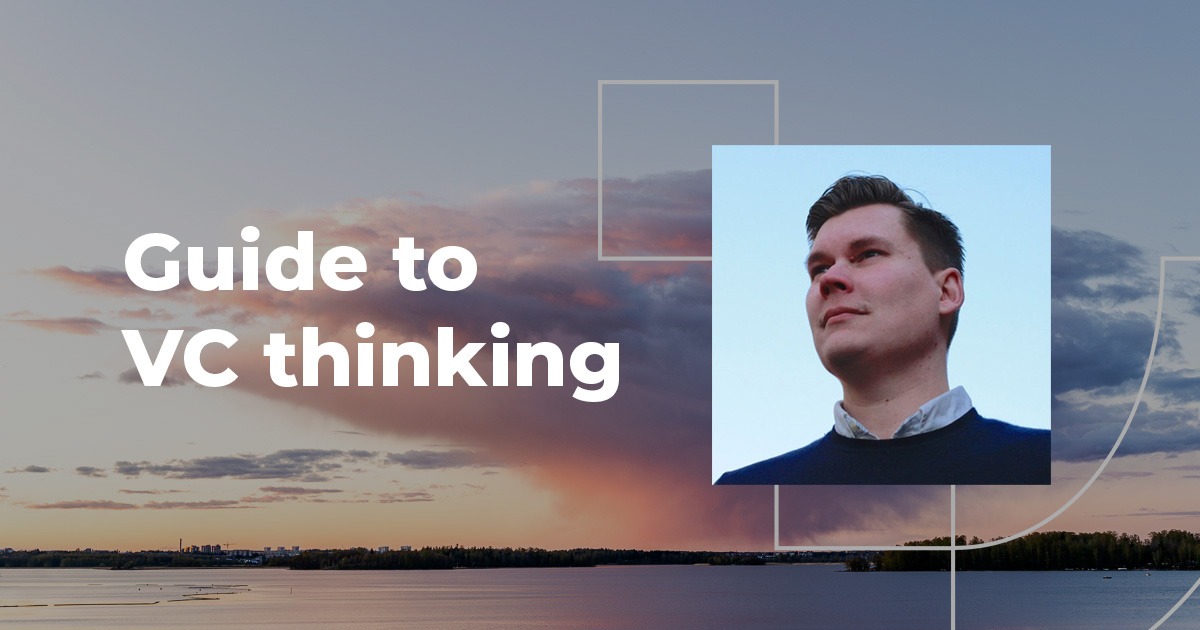Venture Capital to many might seem like a black box; your idea goes in and a yes/no comes out. This can be frustrating for an entrepreneur trying to rush with growth and securing funding. I don’t blame you, venture capitalists (like so many professional groups) are also notorious for using a lot of investment specific slang and acronyms that you might not understand as a founder, especially if you come from academia and have not yet been submerged in the start-up ecosystem.
You really can’t describe the process of venture investments as an exact science, and my only wish for this blog is that I can shed some light on the different facets that drive our investment strategy and decision process.
We at Voima Ventures take great pride in working closely with our potential investments, sitting down with them and figuring out concretely together how the company’s strategy including the product, technology development and sales could look like going forward, or drafting a realistic bottom-up budget together to see how much money does the company need in order to hit the next milestone. As deep tech companies might have multiple special considerations such as heavy reliance on continuous IP development, long time to market, subpar team diversity or high capital investment requirements, it is very important to agree on the way forward and priorities before the official “wedding”.
The hard fact is that most founders will not make it from the first dates to the actual ceremony. Let me explain why: traditionally in finance one would build a portfolio of assets, whether it’s bonds, real estate or stocks. The logic behind thinking of investments as a portfolio, super simplified, is that we VCs look to diversify our risk across different investments. This means that if you have all your eggs in one basket and you drop it, you are going to be worse off than the guy who has five baskets. Therefore, you could assume that the best way for VCs to operate is to keep adding assets (start-ups) to the portfolio, each one lowering the overall risk of the portfolio. But, unlike other more traditional asset classes, it is very hard to say whether a start-up can build revenue, get profitable, pivot if needed etc. After all, most start-ups do not have any significant market share nor do they generate profits, instead most start-ups will lose money or go out of business. Therefore, VC investing is not about the average variance of the investments but rather about investing into few superstars.
This is generally referred to as the power law and it is the name of the game when it comes to venture capital. Most VC funds never get any money to manage on behalf of the LPs (limited partners; where the money comes to the VC funds) and according to Horsley Bridge, only 4.5% of the deployed capital generated 60% of the returns in the timeframe 1985-2015. If we put that into the real world perspective, for a 50m€ fund that means that there might be two to four companies which generate the majority of the funds returns while the rest of the companies either break even or lose money. This also indicates that only a really small minority of companies will ever get VC funding, and that only a small minority of the funds will ever generate higher returns. According to some statistics from Fundable, as low as 1000 companies in the US get venture financed yearly out of around 500 000 new companies formed every year.
Some venture capitalists, especially those who invest in smaller seed rounds, embrace the traditional portfolio thinking and they simply do a lot of investments hoping that there are a few stars included. This might not be the best way to do investments and as a founder you probably would not want an investor who has no time to add value to your company because she/he has a hundred other companies to manage as well. Rather, you go for the investor, who can add value instead.
When we look at the 4 most common reasons why start-ups fail according to David Skok:
1) No market / product fit
2) Business model not working out
3) Poor management team
4) Running out of cash
and take into mind the further the usual suspects of special considerations in deep tech named earlier, we can generalise that adding the expertise, time (and money) by a venture capitalist or investors into the company will mitigate some of these challenges and help you to grow your company. A “money only” investor is a poor choice for the founder in this light and for the investor themselves as well: if they do not have the time for the company, they cannot address critical issues prohibiting growth or help you with connections, people or expertise, hence negatively affecting their investment.
Now, I’m not saying that venture capitalists are always able to pick winners that can be grown into unicorns (a company with a valuation of a billion € or more), because the power law shows the complete opposite. Some VCs just perform better than others. Therefore, every time a VC fund is thinking about investing in a company she/he must carefully weigh the number of companies that can be helped to grow with a finite amount of time, while making enough investments to increase the chance that at least some of companies in the portfolio will be successful. This also means that every company that the VC gives any serious consideration to should have at least a theoretical plan to grow into one of those superstars.
This is why it might seem like venture capitalists take forever to make up their minds, scrutinize every detail and ask stupid questions about you, your team, idea and the future. To a founder this might be frustrating from time to time, but in the end, a diligent process is good for both parties and typically a learning process as well.
So, what can you do as an entrepreneur in order to grow the sort of confidence that an active VC is looking for in an investment?
There are no perfect answers here, but a lot of it depends on the stage that you are presenting your company in and the expectations you set. If you are, for example, just spinning out from a research institute it’s much more acceptable that you are lacking someone in your team or that you don’t have any commercial traction. But your technology should be superb and the problem you are aiming to solve a big one.
I would give two recommendations to all entrepreneurs who want to raise venture capital for their companies. Firstly: start early, as the evaluation will take time, and secondly: consider carefully what makes your company interesting enough for a VC to put in the time. Getting to know the VC and their existing portfolio beforehand will work as a good benchmark on this matter. And remember, not all companies or business models are VC fundable – and that’s OK. There are multiple ways to build companies.





